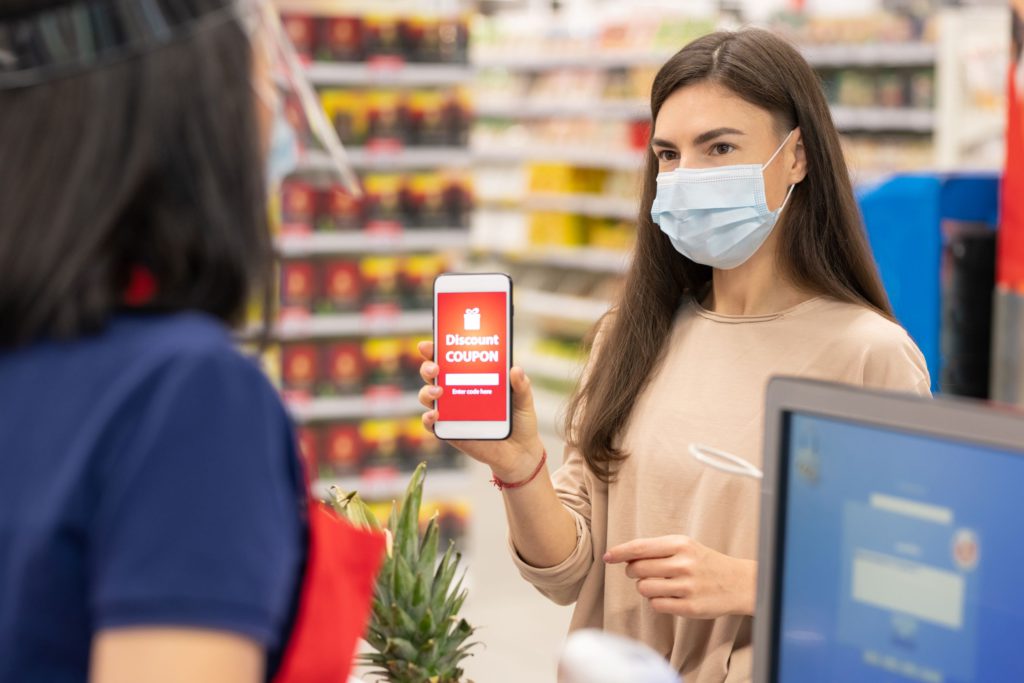In the unofficial history of coupons, Coca-Cola is often cited as giving birth to the couponing movement when the company offered slips redeemable for a free glass of the magic elixir at any soda foundation way back in 1887.
From that trailblazing idea more than 130 years ago, the concept of offering consumers a bit of a tease to get them in the door or to try a new product has become an unwritten code of conduct for businesses of all stripes and sizes. Over the decades, couponing has gone from a sweeping trend for many to almost a lifestyle for some, with websites, books and even television shows dedicated to the art of mastering a savvy deal.
And the forward momentum isn’t slowing down anytime soon.

Let’s face it: Everyone loves a deal. It’s part of human nature. There’s a certain psychology that comes into play when you think you’re getting over on someone by striking a great bargain or finding a special value. It makes us feel good about ourselves, and it makes us feel productive and efficient. On the flip side of the cash register, it builds brand loyalty and invites potential buyers to explore new experiences.
The market and consumer data giant Statista released a 2021 report on U.S. coupon market trends that showed coupons are more than a mere gimmick — and although more and more people are putting the scissors back in the junk drawer in favor of digital deals, coupons are still shaping how consumers shop and influencing the shopping decisions they make. Some of the most striking statistics include:
- U.S. coupon use dominates: 88% of survey respondents in the United States stated they had used coupons for shopping in 2020. That is slightly down from levels in the 90% range the prior two years, but the showing is nonetheless extremely impressive and hard to ignore.
- A taste for something new: Ah, to be young and adventurous again. The younger the customer, the more likely they seem to be to let a deal inspire them to try something new. Among respondents, 89% of millennial shoppers in the United States would try a new brand if they were offered a coupon or discount. That makes millennials the most likely generation to do so, ahead of Generation X respondents with 86%.
- The bargain of bare necessities: The U.S. shopper survey indicated household items (46%), restaurants and food delivery (41%), and grocery delivery (40%) were the most-searched-for coupon categories. That shouldn’t be a surprise since the survey was conducted in the middle of a global pandemic. Yet, it’s no stretch to think those areas would generate the most attention regardless of the coronavirus.
- Season’s greetings: 62% of survey respondents stated better prices would influence them to try a new store or online retailer during the holiday season.
- Tip your postal carrier: The mailbox still matters. Roughly 40% of survey respondents stated they looked in the mail for discounts or offers for shopping in physical stores, proving that going old school still has some swagger.
Coupons still matter. With more shopping options and more ways to reach those future customers coming to light every day, perhaps they matter more than ever. They build an unspoken bond between a business and consumer: If you’re willing to give my shop, product or service a chance, I’ll give you a bit of an incentive. The idea may be more than 130 years old, but the formula for success still works.
And by the way, that little Coca-Cola upstart is still in business.
SaveOn has been helping businesses connect with consumers since 1984. Contact us today to explore how we can help your business reach its fullest potential.






